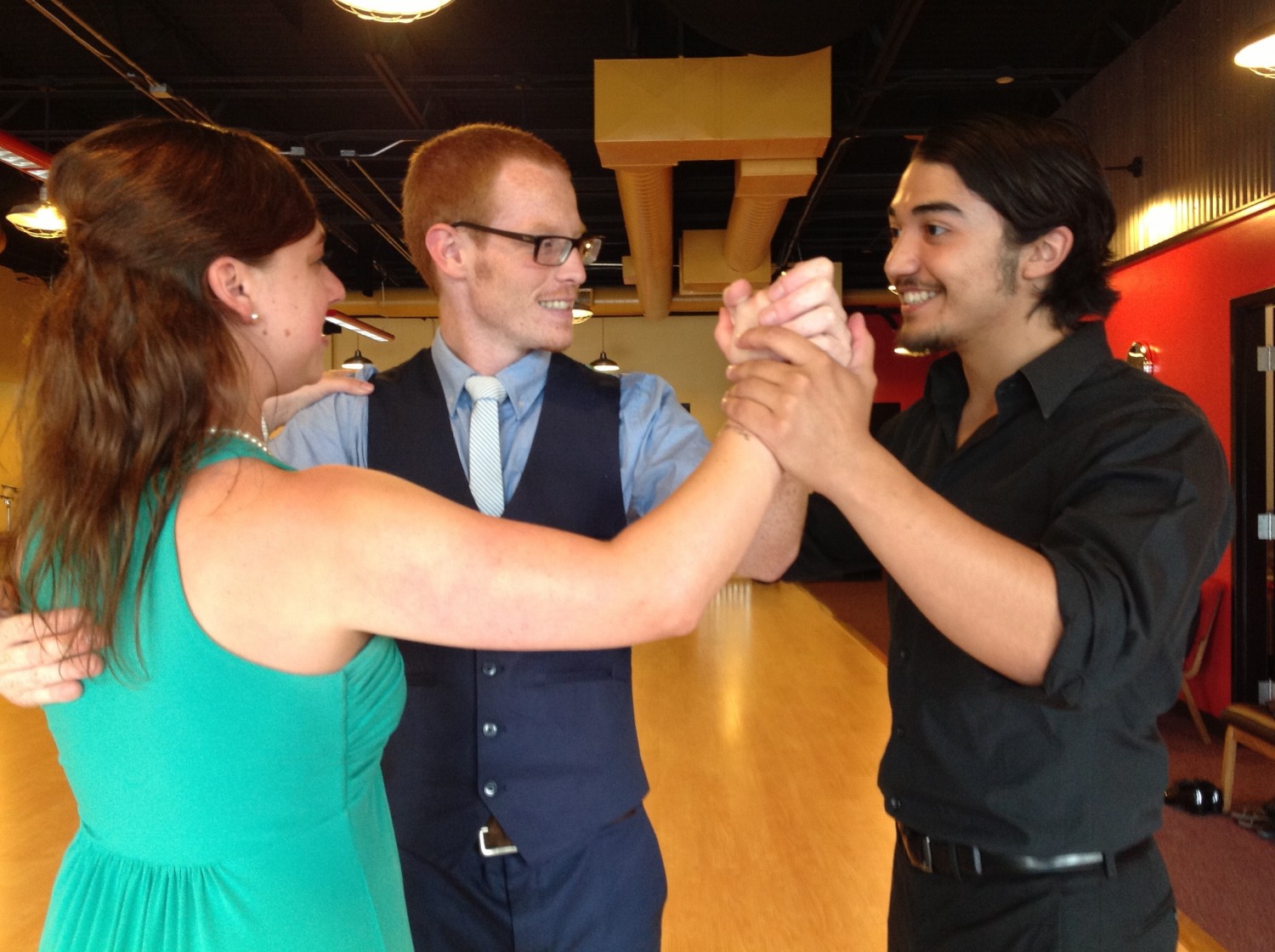Fundamentals, Part Two: Frame

We’re continuing on our journey through the key techniques you need to wean yourself away from pattern-dependence and become an effective social or performance dancer. This week is especially useful for partner dancing, because it focuses on the first part of how we connect with each other: The positioning of the hands, or the frame.
Our frame creates the space in which we can dance without running into each other. It is achieved by rounding the arms forward from the back, as if we were standing against the inside wall of a giant barrel. The most important rules of a good frame are:
- The wrists are further in front of you than the elbows.
- The elbows are further in front of you than the shoulders.
- If two hands meet, they must be at the middle point between you and your partner. If a lead brings one partner closer to or further from the connection, the pressure involved should cause the other to maintain the centre point.
- In closed positions (including promenade), the hand that is NOT connected to another hand must connect to the partner’s body – usually the upper arm or shoulder blade.
- In single or double handholds, the wrists are held BELOW the elbows, close to the follower’s waist level.
- Both arms must maintain light but flexible muscle tone to ensure the frame can give slightly, but does not collapse.
- Muscle tone is not solely carried in the arms, but extends into the shoulders and core as well. The point of the arms is to convey the movements of the body, and an unbroken chain of water-like tension (see below) is required to transmit this.
Maintaining the arms in this way is the optimal way for partners to communicate through the use of pressure, which we will talk more about next week. Pressure is created through points of contact, literally where you physically touch your partner’s body. The most common places are:
- The palms.
- The back of the fingers (in a single or double handhold).
- The top, side, or underside of the arm (generally the leader’s right arm and follower’s left arm in a closed position).
- The shoulder blade, either curving around from the armpit or further around, toward the partner’s spine.
- The upper arm, just below the shoulder muscle.
- The “hinge” just behind the shoulder muscle, but above the shoulder blade, just behind the armpit (closed positions in tango).
Apart from the rules above, the frame may also shift slightly depending on certain leads and follows, the conditions of the room, and the needs of the partners.
For example, the lead may temporarily drop the L-R hand connection down by his side to pass through a crowded area, or a follower with longer arms than their leader may connect to the latter’s back instead of the upper arm to ensure more points of contact. Remember that the primary goal is allow easy communication without risk of collision.
More subtle shifts in frame occur in response to changes in pressure, but both partners must maintain muscle tone, causing the arms to “move with resistance”, and spring back to their original positions when that pressure is reduced. The two exceptions for this are:
- When the arm is raised or lowered (other directions of movement are gently resisted).
- When the frame is deliberately broken, as is done with armstyling (we’ll cover this in a later article).
What is the right amount of muscle tension? Let me explain using the rock/water/air analogy:
When our frame becomes too tensed, or “rock-like”, it becomes very difficult for our partner to move us, and communication between the bodies is stifled.
When we relax too much, we respond like air, giving insufficient resistance needed to feel our partner’s full intention. This often results from too light a lead, or too quick a response, leaving us to guess where and how far to go.
Moving like water is ideal, because it includes the perfect amount of resistance: We provide enough resistance to feel what our partner is doing, but not an ounce more.
In general and to maintain the arm positions, the dance couple must find a level of pressure they can both be happy with, which will change from one couple to the next.
We are now ready to talk about how the frames communicate through the use of pressure. See you next week!
About the Author
Ian Crewe has been dancing ballroom for over 18 years, and has a Licentiate in American smooth and rhythm. His passion for dance eventually led him to blogging and the World Wide Web. Ian currently teaches at the Joy of Dance Centre, Toronto, ON, Canada.

